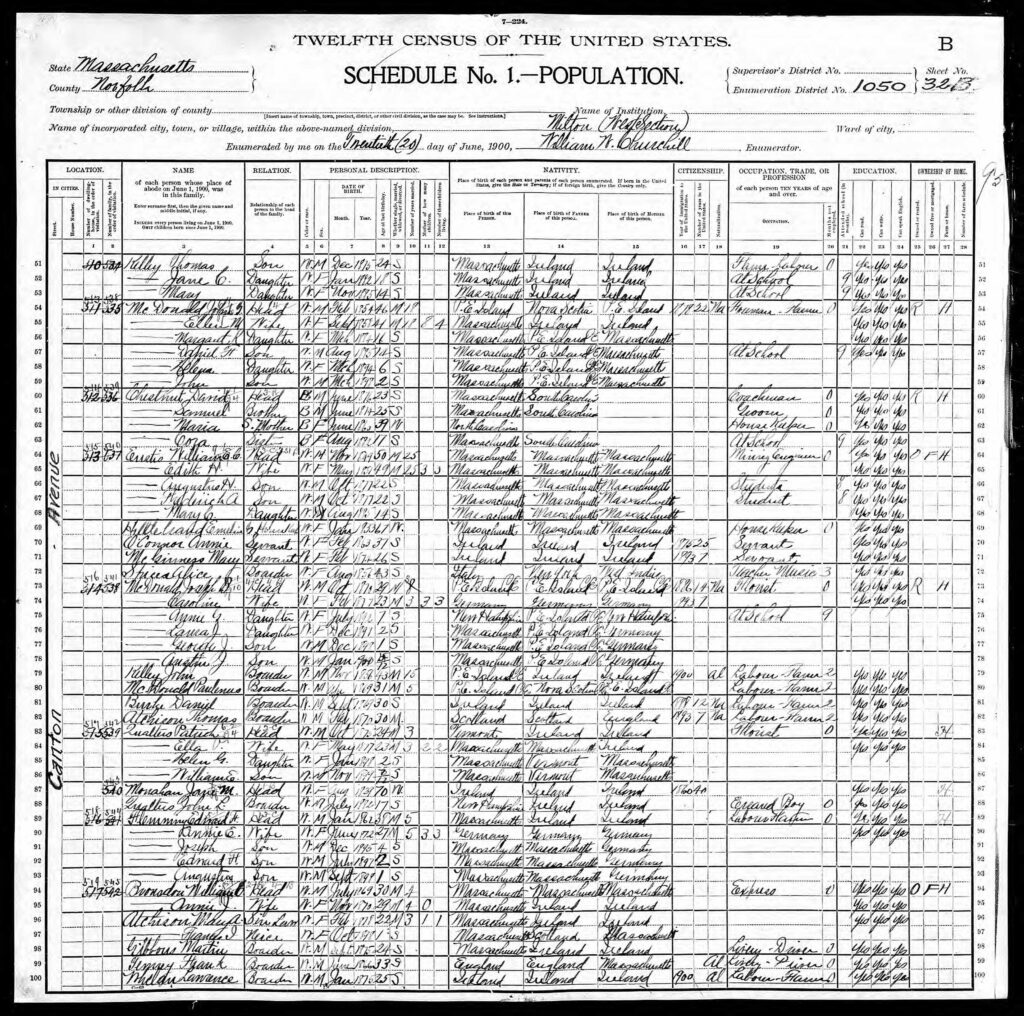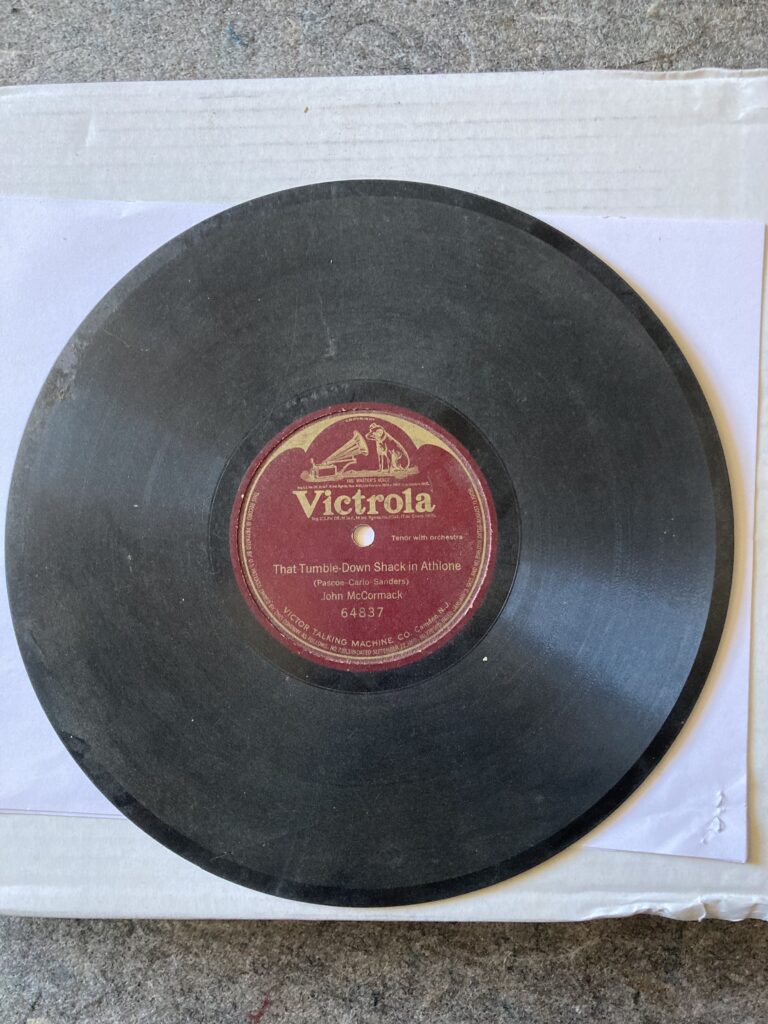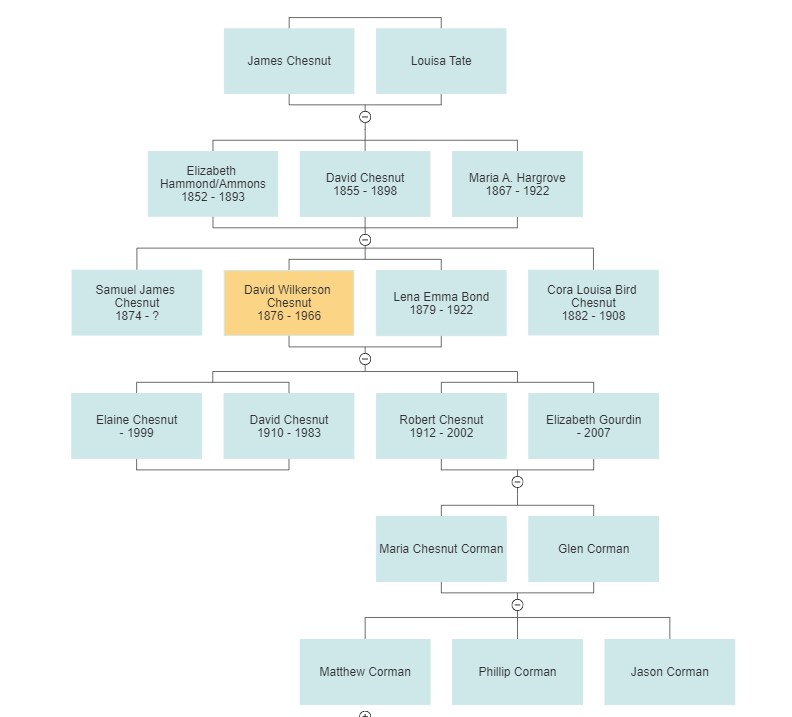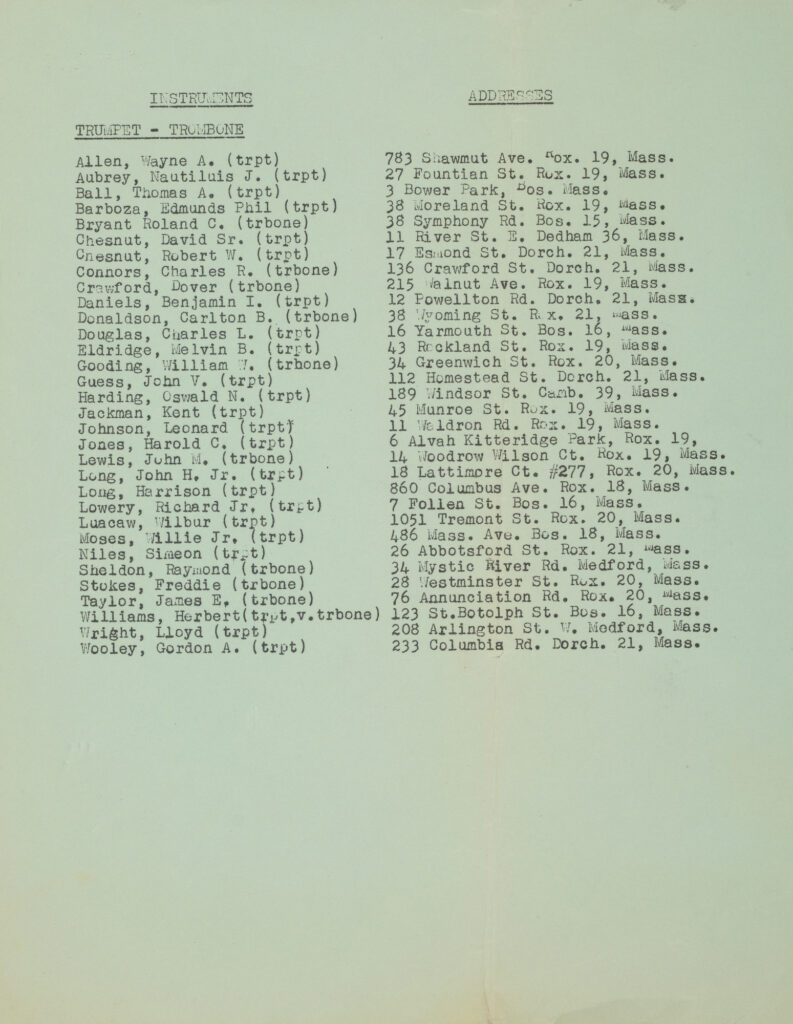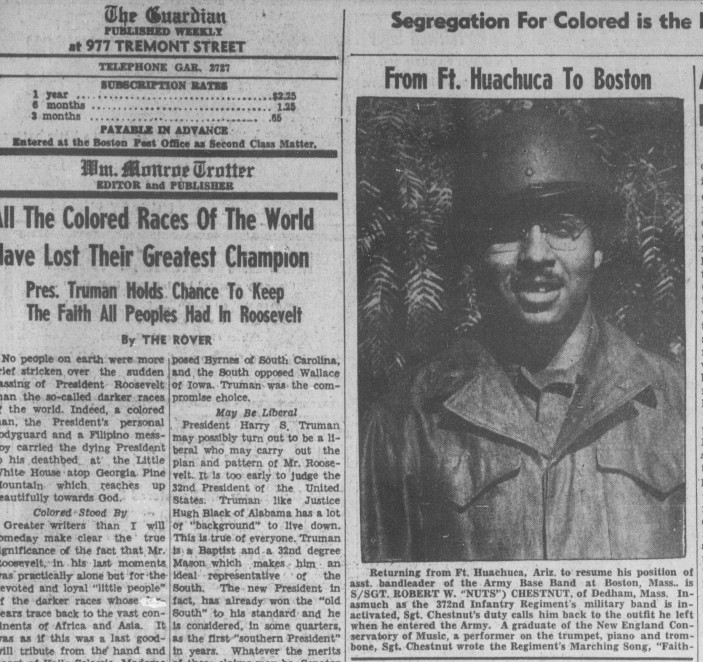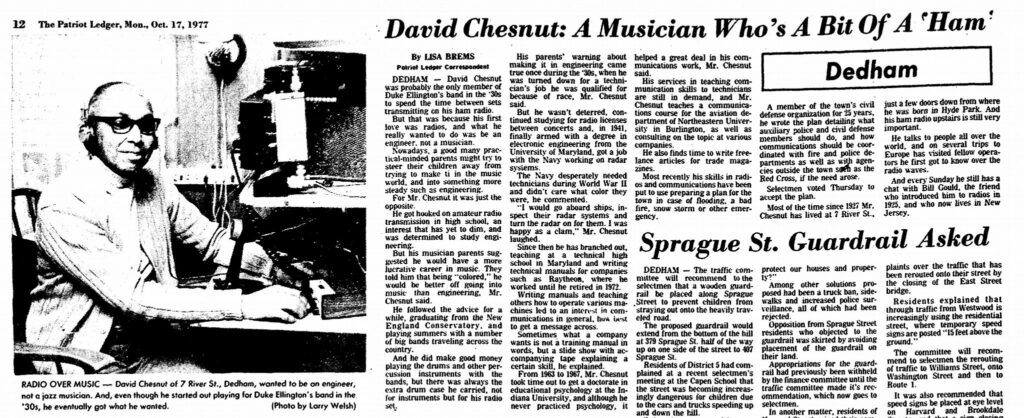 Eustis Estate
Eustis Estate

Most of the images in this gallery belong to descendants of the Chesnut family and document the vibrant musical legacy they have preserved. Explore historic newspaper articles, Chesnut family albums, context on the history of jazz, and more.
David Chesnut I:
From Enslavement to EmploymentW.E.C. Eustis was an amateur photographer and took many pictures of life and work at the Eustis Estate. He happened to photograph both David Chesnut I and II in their work with horses on the estate. Click on images below for deep zooms of his photographs.
The Dark Room
W.E.C. Eustis was an avid photographer and sometime after the original construction of the house, a dark room was added to a storage area of the basement. He could develop prints from his glass plate negatives right in his own home. Most of the beautiful historic photographs throughout the house were taken by W.E.C. in the 1890s.
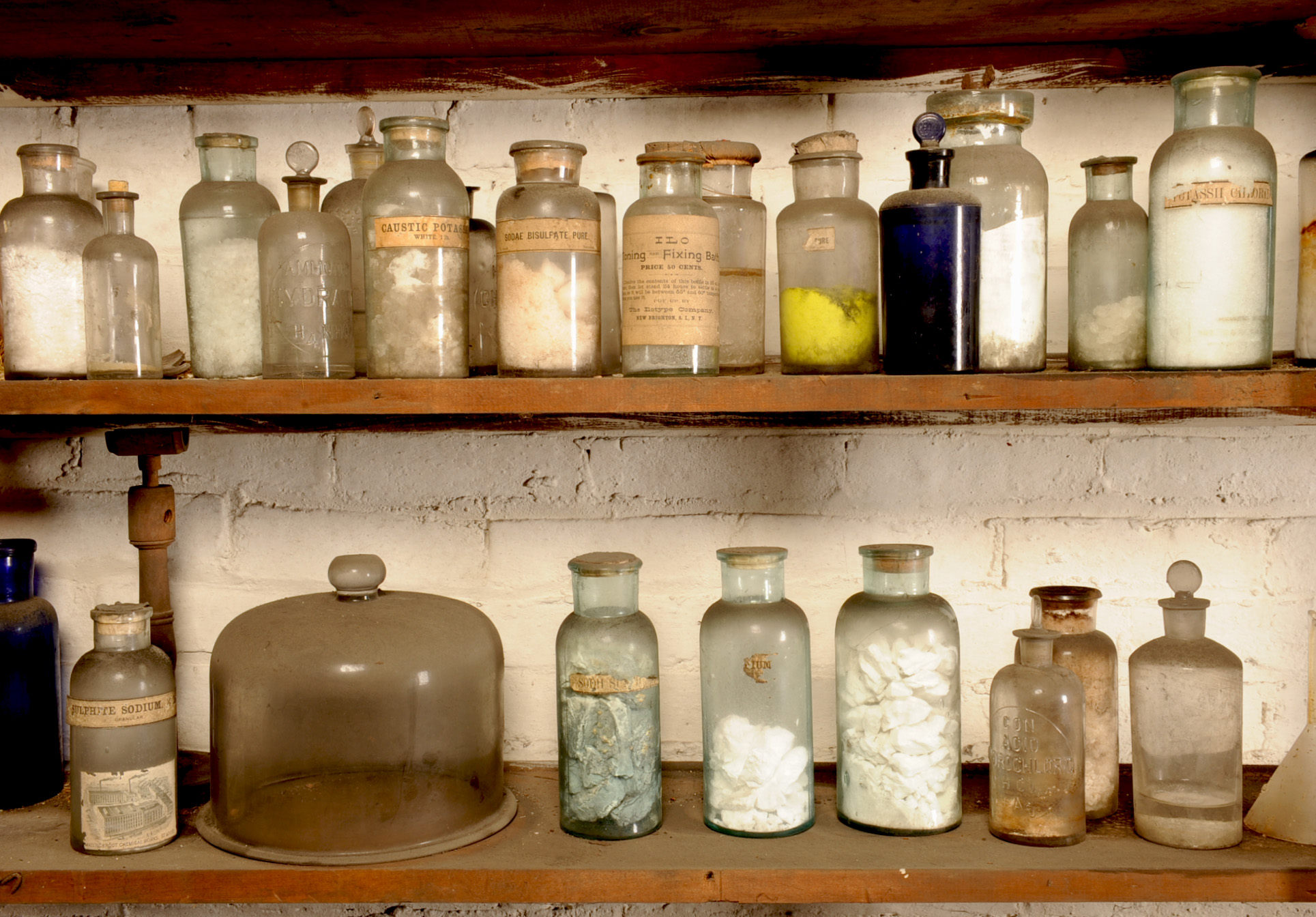
A Diary From Dixie
Complex OriginsDavid Chesnut I was born in Camden, South Carolina, where Mulberry Plantation was located. This plantation is famous for being the home of Mary Boykin Chesnut, author of A Diary From Dixie, one of the most well-known narratives about the experience of living through the Civil War. The parents of David Chesnut I were likely enslaved at Mulberry and the Chesnut family likely took their name from the family of James Chesnut. David Chesnut II always kept a copy of A Diary From Dixie in his home next to several other important family volumes, suggesting he was aware that his own family had been enslaved by James Chesnut’s family at one time. His son, David Chesnut III, corresponded with a genealogist and scholar in South Carolina in the 1970s about this connection as well.
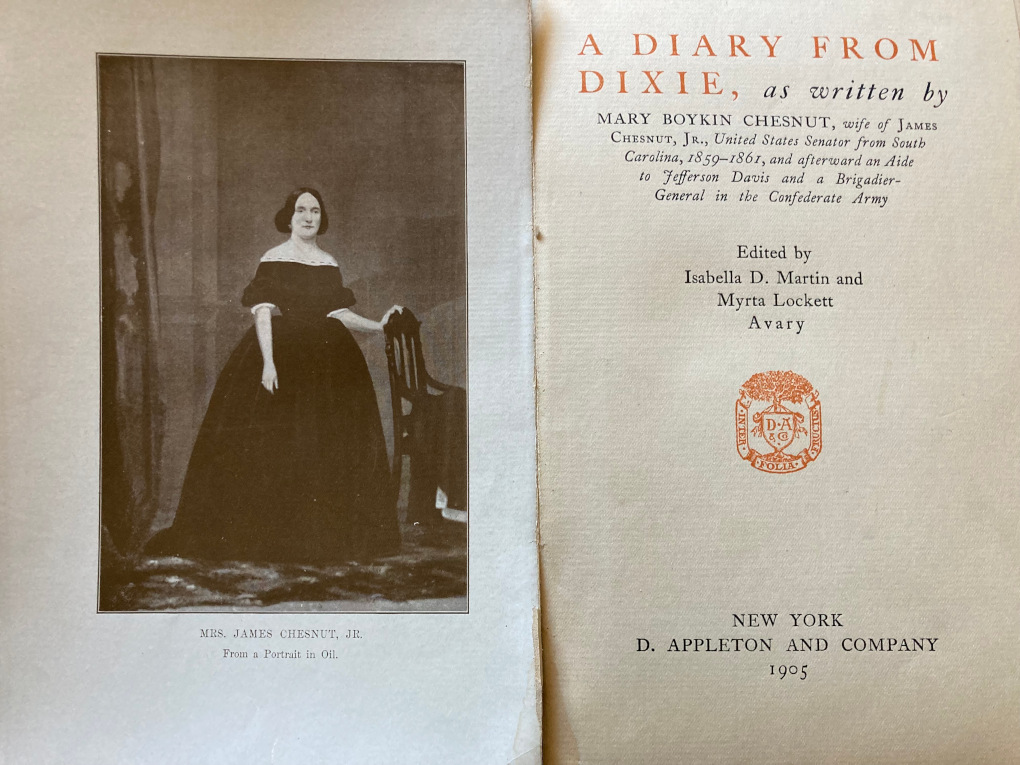
Mary Boykin Miller was born into a powerful political family in the antebellum south. As the daughter of South Carolina’s governor she was highly educated and traveled in privileged circles, eventually marrying lawyer and politician James Chesnut Jr. James was a member of one of the wealthiest slaveholding families in the state and would go on to become a United States Senator, a Confederate general and an aide to Jefferson Davis during the Civil War. The couple made their home near Camden, South Carolina, on a large plantation called Mulberry where they entertained the local social and political elite. Mulberry was one of the largest and most profitable inland plantations in the area and enslaved up to 500 people by 1849.
Mary Chesnut was known to be well-read and witty and was popular in southern high society. In 1859, as Civil War loomed over the southern states, Mary began keeping a diary and recording her days as a member of the Confederacy’s inner circle while historical events unfolded around her. As the wife of a high-ranking military official she had a unique perspective on the events of the war and she added her own thoughts on secession, enslavement and society as she watched the Confederate government taking shape. The Chesnuts survived the war, although they witnessed several major southern conflicts including the attack on Fort Sumter in April of 1861. After the war Mary worked to revise her diary into a book which was first published in 1905 (nineteen years after her death) as A Diary From Dixie.
US Census, Milton, Massachusetts, 1900
Note in this page from the US Census from 1900 that David Chesnut II and his family are listed just above W.E.C. Eustis. This indicates that they lived nearby on the same property on Canton Avenue in MIlton, in one of the various houses that the Eustis family maintained for staff.
Cars & Carriages of the Gilded Age
David Chesnut II worked at the Eustis Estate during the transition between horse-drawn carriages and automobiles. W.E.C. Eustis was an engineer who liked to be on the cutting edge of technologies and transportation was no exception. W.E.C. acquired automobiles early in the 20th century and David likely learned to drive on those vehicles before becoming a chauffeur. Click below to zoom in on carriages and cars from this era.
W.E.C. Eustis in His Autocar Model VIII, c. 1904
The 1904 Autocar Model VIII may be the first automobile purchased by W.E.C. Eustis. This touring car is one of the early examples of left-side steering in the United States though this edition used a tiller system instead of a steering wheel. The Autocar Company was founded by Lewis and John Clark in 1899 in Ardmore, Pennsylvania; the company had a reputation for reliability and continues to manufacture commercial trucks to this day.
David Chesnut II
Changing Lanes and Making MusicAround 1900, David Chesnut II was promoted to work as a coachman at the Eustis Estate and his brother Samuel was employed as a groom. In 1905, he was hired as a chauffeur for wealthy shoe manufacturer Henry B. Endicott at his estate in Dedham, Massachusetts. Learn more below about some of the objects he kept with him throughout his life.
Up From Slavery
Booker T. Washington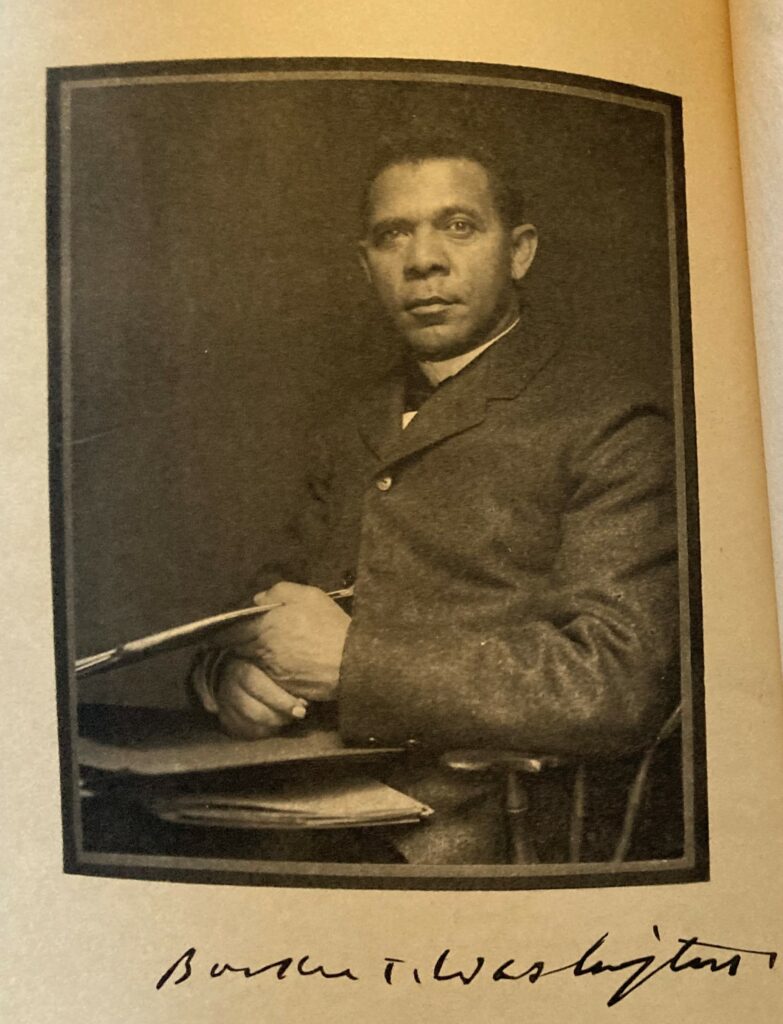
Booker T. Washington (1856-1915) was an American author and educator who became a well-known leader in the African-American community in the 1890s through the 1910s. He was born into slavery in 1856 in Virginia. After emancipation, he not only earned a formal education for himself but dedicated himself to helping other former slaves and their descendants do so. He was one of the founders of the Tuskegee Institute in Alabama, one of the first historically-Black colleges, which continues to today. He gained national prominence after his famous “Atlanta Compromise” speech, which said that education was the way to achieve progress rather than fighting against the racist systems in the Jim Crow segregated South. Washington was not without controversy, as not everyone supported his views, with many other Black political leaders finding him too “accommodationist.”
Washington published his autobiography, Up From Slavery, in 1901; the book was a best-seller prompting him to embark on a series of lecture tours. In July of 1903, he visited Boston to speak at the historic A.M.E. Zion Church on Columbus Avenue. The church was a center of Black life in Boston and had a large congregation that may have included the second David Chesnut and his family. Washington was set to debate William Monroe Trotter, editor and publisher of the self-described Black radical newspaper the Boston Guardian. The fiery Trotter had long been critical of Washington’s more moderate views, citing them as a hinderance to racial equity and claiming that they encouraged the separate and unequal treatment of Black communities. On a sweltering July evening over 2,000 spectators gathered to watch the two men debate, but the conversation quickly dissolved into a shouting match, and then into chaos as supporters of each speaker clashed inside and outside the church. Several people were arrested before the crowd was dispersed. The event would come to be known as “The Boston Riot,” and in its aftermath Trotter and two of his associates were charged with disturbing the meeting. Several witnesses asserted that he had intentionally undermined the debate by planting loud detractors in the audience. All three men were found guilty of the charges and the Boston Sunday Journal noted that the disturbance was “in no way expressive of the feeling entertained toward Mr. Washington among the colored people of Boston and the vicinity.”
That same year, David Chesnut II was gifted a copy of Washington’s book Up From Slavery by Mrs. Emily Jeffries, W.E.C. Eustis’ widowed sister who lived on the adjoining property to the Eustis Estate. It is likely that the Chesnut family would have assisted with the horse and carriage needs of the Jeffries house as it was, in effect, part of this family compound. It is an interesting gift for her to give to David Chesnut and possibly is a commemoration of his attendance at the event in Boston. In any case, he kept this book in his possession for the remainder of his life.
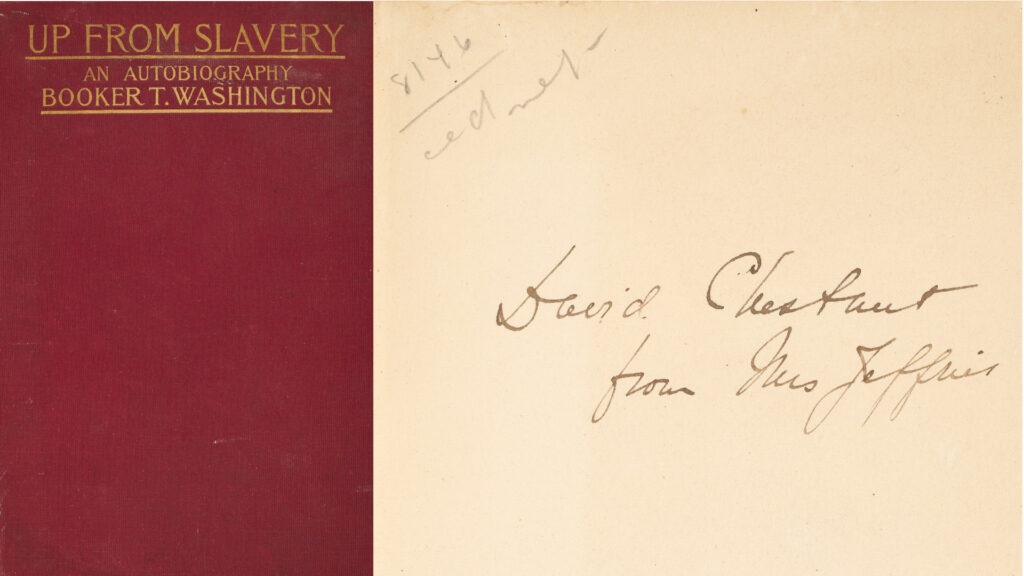
That Tumble Down Shack in Athlone
John McCormackDavid Chesnut II owned this Victrola record which featured Irish tenor John McCormack singing “That Tumble-Down Shack in Athlone,” a song popular in the United States in the 1920s.
To view the lyrics, turn captions on under the settings once the video is playing.
Credit Line: Library of Congress, National Jukebox
Military Bands
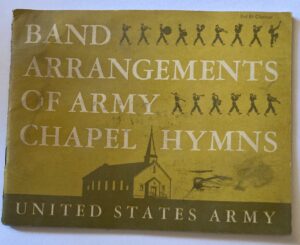
Several generations of the Chesnut family served in the U.S. military and played music for bands as part of their service and later as veterans. David Chesnut II was a World War I veteran who marched in parades, directed local military exercises, and served as a local lamplighter and air raid warden. Band Arrangements of Army Chapel Hymns, published by the U.S. Army in 1944, included arrangements for hymns that could be used for holidays, funerals, and Catholic, Jewish, and Protestant services. This copy could have been given to him by his son Robert, who served in the U.S. Army during World War II.
List of Boston-area Trumpet and Trombone Players
David Chesnut II and his son, Robert Chesnut, are listed as trumpet players on this list of trumpet and trombone players in the South Boston communities like Dedham, Dorchester, Roxbury, and Medford. This unidentified page may relate to military bands as they were both U.S. Army veterans who played in local parades and demonstrations.
From Ft. Huachuca to Boston
Boston Guardian, April 21, 1945Robert Chesnut in the U.S. Army
Robert Chesnut was the assistant bandleader of the Army Base Band in Boston and also played in the 372nd Infantry Regiment’s military band. This article from the Boston Guardian from April 21, 1945 mentions he even wrote the Regiment’s Marching Song “Faith.” The article refers to him as Sgt. Robert “Nuts” Chestnut. The misspelling of the last name was common for the family.
The Development of Jazz Music
“Music has always been integral to the African American struggle for freedom.” – Bernice Johnson Regan, singer, and civil rights activist
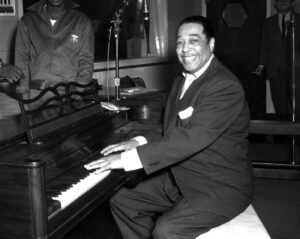
The musical backdrop of the Chesnut family story reaches from the present day to the Antebellum South and the earliest expressions of Black music in America. Musical traditions brought by captured West Africans had an important place in the social, spiritual, and educational lives of enslaved communities in the American South. Traditions such as polyrhythm, improvisation, and call-and-response formed the underpinnings for earliest blues and jazz. During the Reconstruction
Era, these vernacular forms reached wider audiences and grew into more defined performance styles that were often influenced by the demands of white audiences. “Dixieland music” emerged from New Orleans in the 1880s, introducing the idea of improvisation to mainstream America. In the 1890s, the first published Ragtime scores appeared. With its quick, layered rhythms and heavy use of syncopation, the style soon swept the nation and defined American popular music at the turn of the century. The release of Scott Joplin’s famous “Maple Leaf Rag” on player piano roll in 1916 further increased the popularity of Ragtime and early jazz. Between the 1920s and World War II, a deeper exploration of jazz as an independent art form led to more subtle distinctions and greater range within the genre as musicians utilized their own perspectives to create deeper and more nuanced interpretations of the Black experience through music. The arrival of Prohibition and the Great Depression left Americans searching for new kinds of entertainment and the popularity of jazz, swing and big band music exploded in ensuing decades. Bands led by Duke Ellington, Cab Calloway, and Count Basie were broadcast on radios across the country, and artists like Louis Armstrong, Bessie Smith, and Billie Holiday came to represent the sound of jazz as we know it. It was in this world, often called “The Jazz Age,” that brothers Robert and David Chesnut left their mark.
Robert and David III
Journey Through the Jazz AgeRobert and David Chesnut III inherited their father’s talent and passion for music. The Chesnut brothers played with several Boston swing and jazz bands in the late 1930s to early 1940s. There are mentions of them in newspapers at the time, though at times their last name is misspelled as “Chestnut.” Explore below some of the work the brothers did with music into the 1950s.
People claim that no good swing exists in Boston. We deny this, while pointing to Jack Hill’s outfit, playing at the Little Dixie over on Mass. Avenue. Despite the foolish economy of cutting the band to six pieces removing Eddie Hawley’s fine bass and Bob Chestnut’s trumpet work, the band still swings. High Diggs (piano) and Dave Chestnut (drums) “kick” right along while Bill Stanley’s trumpet and Daniel Potter’s excellent sax work are worth catching.
Swing column by Michael Levin, Harvard Crimson, May 31, 1940
David Chesnut: A Musician Who’s a Bit of a “Ham”
This article from the Patriot Ledger newspaper in Quincy, Massachusetts features David Chesnut III. It notes that David’s musician parents (Lena and David Chesnut II) thought that because of his race a career as a musician was a safer bet than engineering. Click the image to the right to read the whole article.
Chesnut Family Album
This Chesnut family album features photos of members of the family from the 1940s-1960s.
Matt Corman
Making It Happen
The musical traditions begun by David Chesnut II in the early 1900s have grown and flourished through four generations. Like the generations before them, Matt Corman and his siblings grew up surrounded by music. Today, Matt is an example of the Chesnut family’s musical legacy as he continues his success in the world of hip hop. In 2014 he made his national debut with his mixtape, “Bars Over Bass.” Since then, Matt has performed to sold out-crowds both in Boston and nationally, appearing at venues like the Middle East in Cambridge, Massachusetts and Boston’s House of Blues. More than twenty million streams on Spotify attest to his popularity and his influence on independent music. Matt uses his platform to mentor other rising artists through his brand MIH, which stands for “Make It Happen,” a philosophy that has resonated through the Chesnut family for nearly two hundred years.

Since becoming a success, Matt Corman has worked to guide other rising artists as they navigate the recording industry. His podcast, Kids at Work, and his brand, “Make It Happen,” are reflections of his efforts in this area. Visit www.mattcorman.com to learn more about his music, podcast, and upcoming shows.
